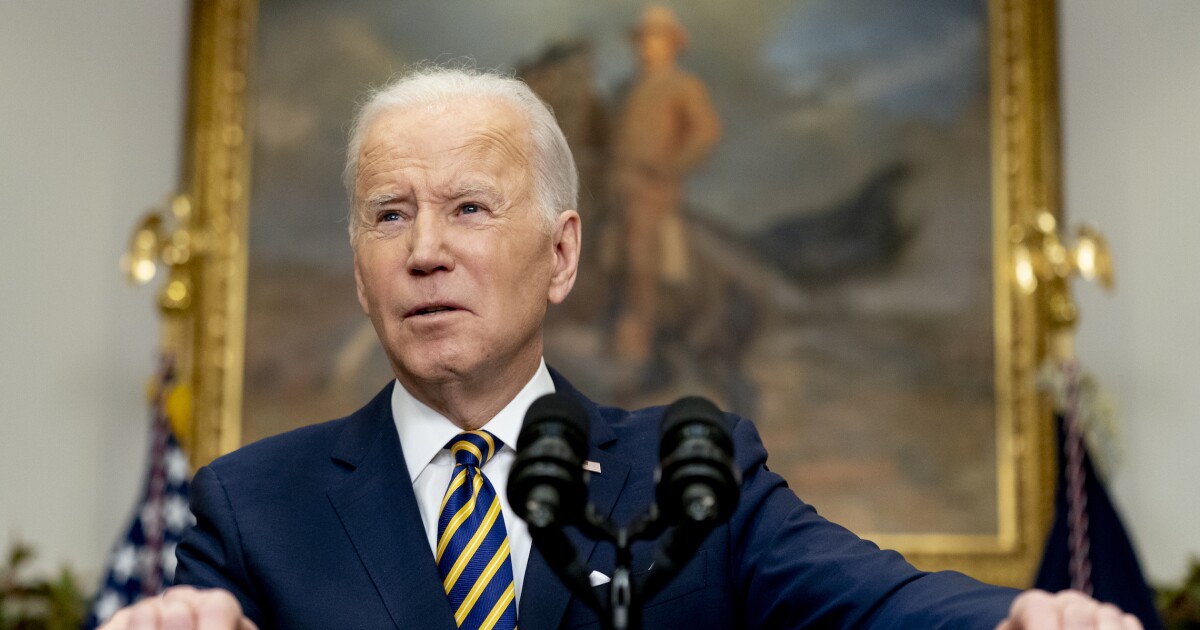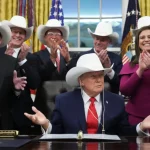

President Joe Biden is weighing the release of more oil from the U.S. Strategic Petroleum Reserve in an effort to help tamp another surge in prices expected after OPEC+ announced its plans to slash oil production by roughly 2 million barrels per day.
But experts warn that further depleting the nation’s emergency stockpile could be a risky move for Biden — one that could have a limited market impact and leave the United States vulnerable and resource-strapped at a time of an actual domestic supply emergency.
HERE ARE THE OPTIONS FOR RETALIATING AGAINST SAUDI ARABIA FOR OPEC+ PRODUCTION CUTS
Here’s what to know:
How much has Biden already released?
In March, Biden ordered the release of 180 million barrels of oil over a six-month period as his administration sought to combat the massive price hikes caused by Russia’s war in Ukraine.
The March release was the largest and fastest drawdown in the stockpile’s history. To date, the administration has released roughly 160 million barrels from the sale, with sales for another 10 million barrels extended through November.
Can he undo the higher prices from the OPEC+ production cut?
Biden’s SPR releases so far do seem to have put downward pressure on gas prices.
A Treasury analysis estimated that the SPR sales, coupled with the 60 million barrels of crude also released by IEA members, reduced gas prices by roughly 38 cents per gallon. The national average fell in September to $3.71 per gallon, down from the all-time high of more than $5 a gallon in June.
But it’s very difficult to say whether or to what extent additional SPR releases would lower prices, a range of outside experts told the Washington Examiner.
The fact that Biden has already drained the reserves considerably makes it even harder to predict, said Lutz Kilian, a senior economic policy adviser at the Federal Reserve in Dallas.
“The thing about reserves is that they’re supposed to calm down people. But the more of the reserves you actually use, the more people think about — well, how much is left?” he said in an interview. “And if things were to get worse, would that be enough left to deal with that?”
The extent to which SPR releases can drive down oil prices also largely depends on whether the sales are seen as something that can be sustainable for long enough to deal with an anticipated shortfall.
That “may depend on how concerned people become about the future availability for even bigger emergencies that might happen down the road,” Kilian said.
How much oil is left in the reserve?
Biden’s sales have drained the SPR down to its lowest point in four decades.
When the drawdowns were first announced, the U.S. had around 575 million barrels of oil stored in its underground reserves, according to data from the Energy Information Administration.
Now, the stockpile has dwindled to about 416 million barrels. (For context, that’s enough to supply the global oil market for about one week.)
How much more can Biden sell?
If Biden chose to order more SPR sales, he couldn’t do so forever. In fact, presidents are barred from draining the stockpile past 250 million barrels without congressional approval.
That means that, under a release schedule of 1 million BPD, any additional release would be constrained to a relatively short period of time — presumably, a period of two or three months, said Kilian. “And at that point, you have to worry that people start getting nervous — about how much of the SPR has been spent and how much of an insurance function it can still serve at that much lower level,” he said.
Does he have to refill it?
The administration is legally obligated to replace the oil sold but has yet to implement a plan to do so.
“The SPR release is not a long-term energy security strategy,” said Karen Young, a senior research fellow at Columbia University’s Center on Global Energy Policy.
“At some point, that reserve must be refilled, and we will pay to do so at a high price,” Young added. “Trying to manipulate prices of refined fuel prices with releases of crude oil for an election cycle is not an energy policy.”
What are the downsides of releasing more oil?
Draining more oil from the U.S. emergency stockpile could also pose a major national security risk, leaving the U.S. vulnerable in the event of a supply emergency or disruption.
The primary function of the SPR is to be an emergency response tool used by the president in the event of an “economically-threatening disruption in oil supplies,” according to the Department of Energy.
One such emergency occurred in September 2005, when Hurricane Katrina barreled through the Gulf of Mexico, causing catastrophic damage to oil production facilities, terminals, pipelines, and refineries in Louisiana and Mississippi.
Roughly 25% of U.S. production was affected, and all production in the Gulf was temporarily shut down.
In total, the U.S. provided 20.8 million barrels of oil to aid in the aftermath of Katrina.
A series of natural disasters or a major military conflict could place larger demands on the stockpile.
Republicans have criticized Biden for the releases, charging that he has run down the reserve to a level that compromises security.
“The long-term future of the SPR is very much in doubt, and everything that the Biden administration has done with respect to it has only accelerated its demise,” said Tristan Abbey, president of Comarus Analytics and a former Republican senior policy adviser at the Senate Committee on Energy and Natural Resources.
CLICK HERE TO READ MORE FROM THE WASHINGTON EXAMINER
And “over the near, medium, and long term, treating the SPR as an ATM and using it for blatantly political or electoral-related reasons would impair our nation’s energy security,” he added.





